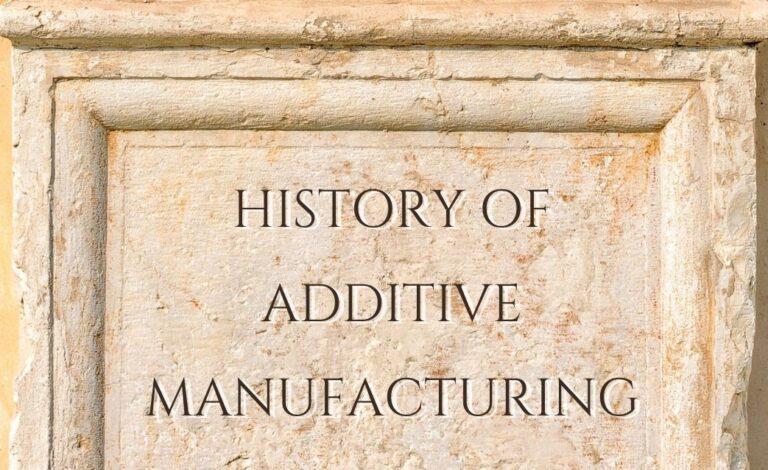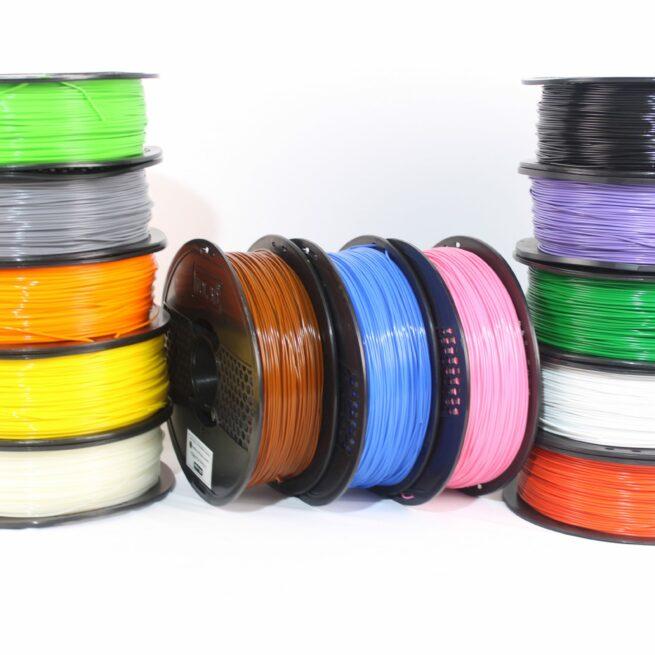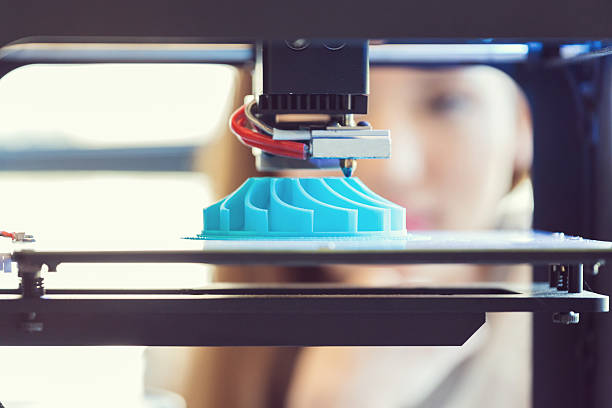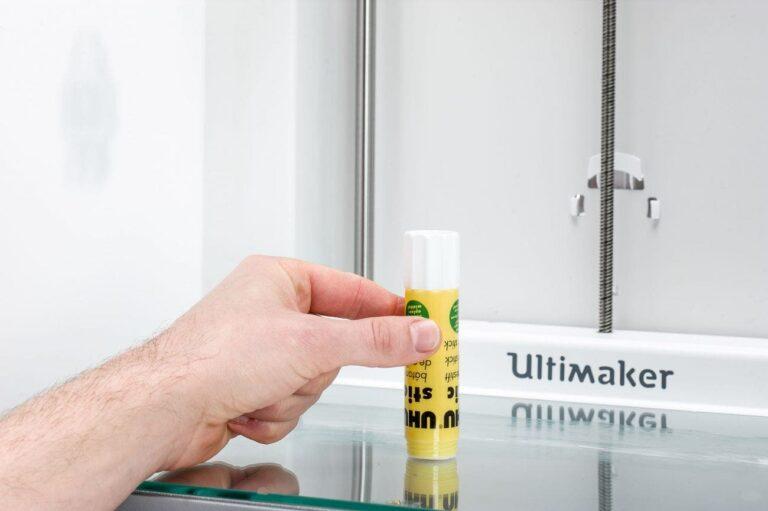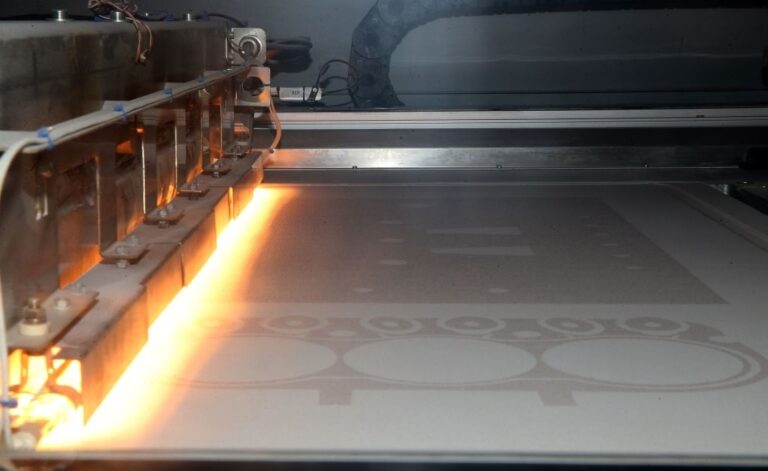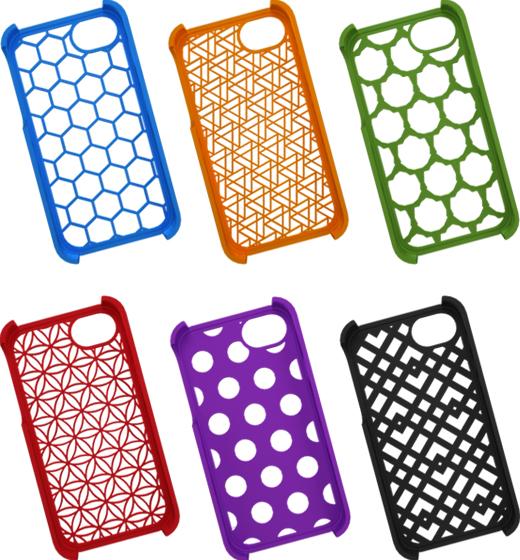Strongest 3D Printer Filament: The Ultimate Guide
Introduction
The quality and longevity of your printed creations can be significantly improved by using the strongest 3D printer filament. The creation of filaments with enhanced qualities keeps up with the growth of 3D printing technology. Proper filament selection is crucial for project functionality and longevity. This guide explores the top five strongest 3D printer filaments. Benefits, applications, and best practices are covered in detail. Don’t underestimate the importance of selecting the right filament. The right choice can make all the difference in your finished product’s strength.
Explore the top five filaments and their features before selecting one. Advantages and uses vary depending on the filament type. Proper printing techniques can also impact the strength and durability of your prints. With the right filament and techniques, you can achieve the strongest 3D prints possible. You will be better prepared to choose the filament that best meets your needs at the end of this tutorial. Let’s examine the characteristics and advantages of each of these five formidable filaments as we move further.
Explanation of 3D printer filaments
3D printer filaments are the materials used to create objects through a process called Fused Filament Fabrication (FFF). Essentially, these filaments are thermoplastic materials that are heated and extruded through a nozzle to build objects layer by layer. Filaments vary in properties and types. Choosing the right filament is crucial. Project requirements determine filament selection. Consider strength, durability, and more. Each filament has unique features. Proper selection leads to better results.
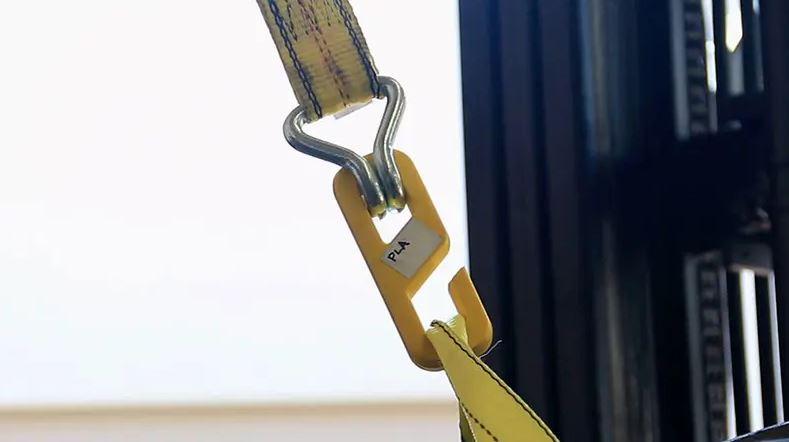
One of the primary factors to consider when choosing a filament is its strength. The strongest 3D printer filament options can greatly impact the durability and functionality of your printed objects. Consequently, understanding the characteristics of these high-strength materials is critical in ensuring the success of your 3D printing endeavors. As we dive deeper into this topic, we will explore the top five strongest filaments in detail.
It’s worth noting that the strength of a filament isn’t the only aspect to consider. Other factors, such as flexibility, printability, and heat resistance, should also be taken into account when selecting the right material. In the following sections, we will compare these factors and provide insights on how they affect the overall performance of each filament type.
In conclusion, selecting the strongest 3D printer filament for your project is an essential step in achieving optimal results. With a thorough understanding of the various filament types and their unique properties, you can make informed decisions and create high-quality, durable printed objects.
Importance of choosing the strongest filament
Selecting the strongest 3D printer filament is crucial in ensuring the success of your printed projects. A high-strength filament can significantly enhance the durability and functionality of your final product, making it more resistant to wear and tear. Moreover, it can withstand the stresses and strains of daily use or harsh environments.
In addition to durability, the strongest 3D printer filaments can also provide better aesthetics for your prints. With improved surface quality and fewer visible layer lines, these materials can create visually appealing objects that meet both form and function requirements. Furthermore, strong filaments are ideal for functional prototypes or end-use parts, where performance and reliability are of utmost importance.
Another essential aspect to consider when selecting the strongest filament is its impact on the environment. Some high-strength filaments are more eco-friendly than others, offering a balance between performance and sustainability. For instance, PETG is a strong filament that is also recyclable, making it a greener choice for your 3D printing projects.
In summary, the importance of choosing the strongest 3D printer filament cannot be overstated. By carefully considering factors such as durability, aesthetics, functionality, and environmental impact, you can make an informed decision that will lead to successful and sustainable 3D printing outcomes.
The top 5 strongest 3D printer filaments
3D printing relies on strong filaments for durable and functional finished products. Choosing the right filament is important for strength, functionality, and aesthetics. Understanding the top five strongest filaments is crucial for making an informed choice. This guide introduces each filament and its unique qualities, benefits, and potential applications. You can choose the ideal filament for your 3D printing projects by looking into these high-performance materials.
Polycarbonate filament
When it comes to the strongest 3D printer filaments, polycarbonate (PC) leads the pack. Known for its impressive strength, toughness, and heat resistance, PC is widely used in applications that require high-performance materials. Additionally, its flame-retardant properties make it an ideal choice for projects that demand stringent safety standards. However, PC filament can be challenging to print with and may require an enclosed printer for best results.
Nylon filament
Next in line is nylon, another exceptionally strong filament that offers both durability and flexibility. Often used in applications that require moving parts or high resistance to wear, nylon is highly versatile. On top of that, it boasts a low friction coefficient and excellent chemical resistance. Despite its many advantages, printing with nylon can be tricky due to its sensitivity to moisture.
PETG filament
PETG, another contender among the strongest 3D printer filaments, provides a perfect balance between strength and ease of use. This material combines the best qualities of PLA and ABS, offering great durability while being more environmentally friendly. PETG also exhibits good chemical resistance, making it suitable for a wide range of applications. It’s important to note that PETG prints at a higher temperature than PLA, so adjustments to printer settings may be necessary.
ABS filament
ABS, a popular choice among 3D printing enthusiasts, is known for its high impact resistance and heat tolerance. This strong filament allows for post-processing techniques like sanding and painting, giving you the freedom to refine your prints further. While ABS is relatively affordable, it can produce unpleasant fumes during printing and may require a well-ventilated area or an enclosed printer.
Carbon fiber filament
Last but not least, carbon fiber filaments offer enhanced strength and rigidity without adding significant weight to your prints. These filaments are typically composed of a base material like PLA, PETG, or Nylon, infused with carbon fibers. The result is a lightweight, dimensionally stable filament with an appealing matte finish. However, carbon fiber filaments can be abrasive and may wear down your printer’s nozzle over time.
In conclusion, each of these five strongest 3D printer filaments offers unique benefits and characteristics. By understanding their properties and potential applications, you can make an informed decision that best suits your project requirements.
Features and Benefits of Each Filament
The strongest 3D printer filaments include polycarbonate, nylon, PETG, ABS, and carbon fiber. Each filament offers unique features and benefits for different project requirements. Polycarbonate is known for its strength, toughness, and heat resistance. It’s great for high-performance applications. Nylon offers a balance of strength and flexibility. It’s perfect for projects that require moving parts or wear resistance.
PETG combines PLA and ABS qualities, offering durability and eco-friendliness. ABS is high-impact-resistant, and compatible with post-processing techniques. Carbon fiber filaments are lightweight, rigid, and dimensionally stable. Consider each filament’s features and benefits to choose the strongest one for your project.
Strength
The strength of the strongest 3D printer filament plays a crucial role in determining the overall durability and functionality of printed objects. When considering strength, it is essential to take into account factors such as tensile strength, impact resistance, and flexural strength. Polycarbonate and nylon have high tensile strength. They resist stretching and pulling forces. These materials are great for certain applications. ABS filament is renowned for its impact resistance. It is suitable for parts needing to withstand sudden impacts. ABS filament is also great for collision-prone objects.
As we compare these filaments further, it becomes evident that each material offers distinct advantages in terms of strength. PETG balances strength and flexibility. Carbon fiber filaments add rigidity without weight. Knowing the strength of each filament helps choose strongest one. This selection matches your project needs. Consider specific requirements when choosing.
Comparison of strength for the top 5 filaments:
| Filament Type | Tensile Strength (MPa) | Impact Strength (kJ/m²) | Flexural Strength (MPa) |
|---|---|---|---|
| Polycarbonate | 55-75 | 60-90 | 80-110 |
| Nylon | 45-80 | 7-12 | 60-120 |
| PETG | 40-52 | 5-9 | 50-75 |
| ABS | 35-50 | 10-18 | 60-90 |
| Carbon Fiber | Varies by base material | Varies by base material | Varies by base material |
*Note: The values provided in the table are approximate and can vary depending on the specific formulation and manufacturer of the filament. Always consult the filament manufacturer’s technical data sheet for accurate information.
Durability
Durability is another critical factor to consider when selecting the strongest 3D printer filament for your projects. A filament’s durability refers to its ability to withstand wear, tear, and environmental factors over time. Polycarbonate and nylon are both excellent choices for applications that require high levels of durability due to their resistance to wear and abrasion. Moreover, these materials can withstand prolonged exposure to various environmental factors, ensuring that your printed objects remain functional for extended periods.
Comparatively, PETG offers a balance between strength and durability, providing increased resistance to wear and chemicals compared to PLA. ABS is known for its impact resistance and compatibility with various post-processing techniques, further enhancing its durability. Carbon fiber filaments, on the other hand, provide exceptional rigidity and dimensional stability, making them suitable for applications that require long-lasting performance. By understanding the durability characteristics of each filament, you can make an informed decision when selecting the strongest 3D printer filament for your needs.
Comparison of durability for the top 5 filaments:
| Filament Type | Wear Resistance | Abrasion Resistance | Chemical Resistance |
|---|---|---|---|
| Polycarbonate | High | High | Moderate |
| Nylon | High | High | High |
| PETG | Moderate | Moderate | Moderate to High |
| ABS | Moderate | Moderate | Moderate |
| Carbon Fiber | Varies by base material | Varies by base material | Varies by base material |
*Note: The values provided in the table are qualitative and can vary depending on the specific formulation and manufacturer of the filament. Always consult the filament manufacturer’s technical data sheet for accurate information.
Heat resistance
Heat resistance is an essential property to consider when selecting the strongest 3D printer filament for projects that involve high-temperature environments or exposure to heat. Polycarbonate stands out as the top contender in terms of heat resistance, with its ability to maintain its structural integrity at temperatures up to 150°C. Nylon also demonstrates good heat resistance, making it suitable for applications where parts may be exposed to elevated temperatures.
In comparison, PETG and ABS offer moderate heat resistance, with both materials capable of withstanding temperatures up to 80°C and 100°C, respectively. Carbon fiber filaments, on the other hand, exhibit heat resistance that varies depending on the base material used. It’s crucial to understand the heat resistance characteristics of each filament to ensure the longevity and functionality of your printed parts under high-temperature conditions.
Comparison of heat resistance for the top 5 filaments:
| Filament Type | Glass Transition Temperature (°C) | Melting Temperature (°C) |
|---|---|---|
| Polycarbonate | 147-155 | 260-340 |
| Nylon | 47-80 | 220-270 |
| PETG | 75-80 | 220-250 |
| ABS | 90-105 | 210-240 |
| Carbon Fiber | Varies by base material | Varies by base material |
*Note: The values provided in the table are approximate and can vary depending on the specific formulation and manufacturer of the filament. Always consult the filament manufacturer’s technical data sheet for accurate information.
Chemical resistance
Chemical resistance is a vital attribute to consider when selecting the strongest 3D printer filament, especially for projects that involve exposure to chemicals or corrosive environments. Nylon stands out among the top contenders for its excellent resistance to chemicals, oils, and solvents. This property makes it an ideal choice for parts that need to endure harsh conditions or come into contact with various chemicals.
Meanwhile, PETG offers moderate to high chemical resistance, making it suitable for a wide range of applications that require some level of protection against chemical exposure. ABS provides moderate chemical resistance, while polycarbonate exhibits resistance to a limited range of chemicals. Carbon fiber filaments, on the other hand, have chemical resistance that varies depending on the base material used. By understanding the chemical resistance properties of each filament, you can make informed decisions when selecting the strongest 3D printer filament for your project requirements.
Comparison of chemical resistance for the top 5 filaments:
| Filament Type | Resistance to Acids | Resistance to Alkalis | Resistance to Solvents |
|---|---|---|---|
| Polycarbonate | Moderate | Moderate | Moderate |
| Nylon | High | High | High |
| PETG | Moderate to High | Moderate to High | Moderate |
| ABS | Moderate | Moderate | Moderate |
| Carbon Fiber | Varies by base material | Varies by base material | Varies by base material |
*Note: The values provided in the table are qualitative and can vary depending on the specific formulation and manufacturer of the filament. Always consult the filament manufacturer’s technical data sheet for accurate information.
Printability
Printability is a crucial factor to consider when selecting the strongest 3D printer filament for your projects. It refers to the ease with which a filament can be printed, taking into account factors such as adhesion, warping, and stringing. PETG is known for its excellent printability, with minimal warping and good bed adhesion, making it a popular choice among both beginners and experienced users. Similarly, ABS is relatively easy to print, but it may require a heated bed and proper ventilation due to the fumes it produces during printing.
On the other hand, polycarbonate and nylon can be more challenging to print due to their higher printing temperatures and tendency to warp. However, with proper bed adhesion techniques and temperature management, these materials can produce excellent results. Carbon fiber filaments, meanwhile, require specialized nozzles made of hardened steel or other wear-resistant materials due to their abrasive nature. By considering the printability of each filament, you can select the strongest 3D printer filament that best suits your printing capabilities and preferences.
Comparison of printability for the top 5 filaments:
| Filament Type | Printing Temperature (°C) | Heated Bed Temperature (°C) | Nozzle Requirements |
|---|---|---|---|
| Polycarbonate | 260-310 | 90-120 | Standard |
| Nylon | 220-270 | 70-100 | Standard |
| PETG | 220-250 | 70-90 | Standard |
| ABS | 210-240 | 90-110 | Standard |
| Carbon Fiber | Varies by base material | Varies by base material | Hardened steel |
*Note: The values provided in the table are approximate and can vary depending on the specific formulation and manufacturer of the filament. Always consult the filament manufacturer’s technical data sheet for accurate information.
Applications of Strong Filaments
The applications of the strongest 3D printer filaments are vast, spanning various industries and sectors that demand high-performance materials. Aerospace and defense sectors, for instance, often utilize strong filaments like polycarbonate and carbon fiber due to their exceptional strength-to-weight ratio and durability. These materials are ideal for manufacturing lightweight components and parts that can withstand the rigorous conditions encountered in aerospace applications.
In the automotive industry, strong filaments like nylon and ABS are commonly used for creating functional prototypes, custom parts, and components that require impact resistance and heat tolerance. Additionally, industrial manufacturing, robotics, and engineering fields also benefit from the use of the strongest 3D printer filaments to produce reliable, long-lasting parts that can endure heavy use and harsh environments. By selecting the right strong filament for your application, you can ensure optimal performance and longevity for your 3D-printed components.
Aerospace and defense
The aerospace and defense industries are constantly seeking cutting-edge materials to optimize performance, and the strongest 3D printer filaments play a vital role in this pursuit. For example, NASA has been exploring the use of high-performance materials like carbon fiber-reinforced composites for manufacturing lightweight parts and components for their spacecraft. These materials offer a remarkable strength-to-weight ratio, making them ideal for reducing the overall mass of spacecraft while maintaining structural integrity.
Similarly, the defense sector has recognized the value of 3D printing with strong filaments, such as polycarbonate and nylon, for creating custom parts and prototypes. One notable example is the U.S. Army’s Rapid Equipping Force, which has deployed mobile 3D printing labs to produce mission-critical components on demand using the strongest 3D printer filaments. By leveraging the unique properties of these materials, both the aerospace and defense industries can benefit from increased efficiency, reduced lead times, and enhanced performance in their applications.
Automotive
In the automotive industry, the strongest 3D printer filaments have emerged as a game-changer for manufacturing processes and part production. For example, BMW has been using carbon fiber-reinforced nylon for producing lightweight and durable parts for its i-series vehicles, contributing to enhanced fuel efficiency and overall performance. This advanced material combines the strength and stiffness of carbon fiber with the flexibility and resilience of nylon, making it ideal for automotive applications.
Similarly, companies like Volkswagen are exploring the use of strong filaments like ABS and PETG for creating custom fixtures, jigs, and tooling within their production facilities. These materials enable rapid prototyping and the ability to iterate designs quickly, ultimately reducing lead times and overall production costs. By harnessing the potential of the strongest 3D printer filaments, the automotive industry can continue to innovate and create more efficient, lightweight, and high-performance vehicles for the future.
Industrial manufacturing
The industrial manufacturing sector has experienced a revolution with the advent of 3D printing and the availability of the strongest 3D printer filaments. One real-world example is General Electric (GE), which has been leveraging materials like polycarbonate and carbon fiber composites to manufacture various components for their industrial equipment, such as wind turbine parts and gas turbine components. These materials provide superior strength, durability, and heat resistance, making them ideal for heavy-duty industrial applications.
Another compelling example is Siemens, which has been utilizing strong filaments like nylon and PETG to create custom tooling and fixtures for its manufacturing processes. By employing these materials, Siemens has been able to reduce production times, cut costs, and streamline workflows across their facilities. The adoption of the strongest 3D printer filaments in industrial manufacturing has paved the way for increased efficiency, innovation, and cost savings, demonstrating the immense potential of these materials in shaping the future of the industry.
Robotics
Another industry where the strongest 3D printer filaments have had a big impact and sped up the creation of cutting-edge technologies is robotics. For example, Boston Dynamics, a renowned robotics company, has been using materials like polycarbonate and carbon fiber composites to make lightweight, durable components for their sophisticated robotic systems. These substances offer the endurance and strength necessary for the harsh settings where these robots work.
Another illustration is the open-source humanoid robot project InMoov, which manufactures its 3D printed parts using strong filaments like ABS and PETG. Hobbyists and researchers can create inexpensive, programmable robots using these materials for a variety of uses, including education, research, and even healthcare. The development of more sophisticated, effective, and affordable robotic systems that will continue to impact our future has been made possible by the strongest 3D printer filaments.
Engineering
The field of engineering has embraced the strongest 3D printer filaments as a valuable tool for developing innovative solutions and products. For example, Arup, a global engineering firm, has been using strong filaments like carbon fiber-reinforced materials and nylon for creating complex architectural models and prototypes. These materials enable engineers to quickly iterate and test their designs, reducing lead times and enhancing overall project efficiency.
Similarly, companies like Airbus have been incorporating strong filaments such as polycarbonate and PETG in their aircraft engineering processes. These materials are used for producing cabin components, tooling, and even structural parts, thanks to their excellent strength, durability, and lightweight properties. By harnessing the potential of the strongest 3D printer filaments, engineers across various industries can develop groundbreaking solutions and products that push the boundaries of what is possible in their respective fields.
How to Choose the Best Strong Filament for Your Needs
The optimum strong filament for your needs will rely on a number of variables that you should carefully consider. Assess the project’s requirements first, such as the ultimate product’s desired strength, durability, heat resistance, and chemical resistance. You can focus on the strongest 3D printer filament selections that suit your own requirements by defining the essential characteristics your project necessitates.
It’s also crucial to think about whether the filament works with your 3D printer because some materials can need particular hardware changes or upgrades, like a heated bed or a hardened steel nozzle. Don’t forget to account for environmental concerns as well, since some powerful filaments may emit gases or need particular disposal techniques. You may choose the strongest 3D printer filament that completely satisfies the needs of your project by carefully evaluating these aspects and examining the performance traits of each filament.
Project requirements
In order to achieve the best results, it’s crucial to take into account each project’s unique requirements while choosing the strongest 3D printer filament. When deciding which filament best meets your needs, consider aspects like mechanical strength, flexibility, heat resistance, and chemical resistance. You may increase the durability and usability of your 3D-printed items by selecting a material that meets the required performance characteristics by carefully evaluating these parameters.
Additionally, it’s crucial to think about the aesthetic components of your designs because different filaments may yield different surface finishes and levels of detail. Consider PETG, which has a smooth surface finish and no tendency to warp, as opposed to nylon and polycarbonate, which may need additional post-processing to give them a polished appearance. You can choose the strongest 3D printer filament that not only provides amazing performance but also meets your visual expectations by taking into account the practical and aesthetic project needs.
Compatibility with your 3D printer
Before using the strongest 3D printer filament for your project, it’s crucial to ensure compatibility with your 3D printer. Different printers may have varying temperature capabilities, extruder designs, and bed adhesion requirements, which can affect the printability of certain materials. For instance, filaments like polycarbonate and carbon fiber composites often require high extrusion temperatures and a heated print bed, which may not be supported by all printers.
Additionally, some strong filaments can cause wear on the printer’s nozzle, particularly those with abrasive additives like carbon fiber. In such cases, upgrading to a hardened steel or ruby nozzle can help mitigate wear and prolong the life of your printer’s components. By carefully considering your 3D printer’s capabilities and making any necessary upgrades, you can ensure successful printing with the strongest 3D printer filaments and achieve the desired results for your project.
Environmental considerations
Environmental considerations play a significant role when selecting the strongest 3D printer filament for your projects. Some materials, like PLA, are biodegradable and derived from renewable resources, making them a more environmentally friendly choice compared to petroleum-based options such as ABS or PETG. However, it’s worth noting that PLA may not offer the same level of strength and durability as other strong filaments, so you’ll need to weigh the environmental benefits against the performance requirements of your project.
Moreover, proper disposal or recycling of your 3D-printed waste can help minimize the environmental impact of using strong filaments. Many filament manufacturers and recycling centers now offer recycling programs for various materials, enabling you to dispose of your waste in an eco-conscious manner. By considering the environmental implications of your filament choices and adopting responsible waste management practices, you can contribute to a more sustainable future while still utilizing the strongest 3D printer filaments for your projects.
Tips for Printing with Strong Filaments
Printing with the strongest 3D printer filament requires specific considerations to ensure optimal results. Firstly, proper bed adhesion is crucial for preventing warping and ensuring a successful print. Using a heated bed or adhesive materials such as tape or glue can help achieve strong adhesion, particularly for materials like nylon or polycarbonate, which may require higher bed temperatures. Additionally, maintaining a consistent temperature throughout the printing process can minimize issues like layer separation or cracking, particularly for high-temperature materials like carbon fiber composites.
Temperature settings are also critical for printing with strong filaments. Adjusting the extrusion temperature and cooling fan settings can help optimize print quality and prevent issues like stringing or oozing. For instance, some filaments may require lower fan speeds or even no cooling at all to maintain optimal strength and durability. By fine-tuning your temperature settings and taking a strategic approach to cooling, you can achieve the best possible results when printing with the strongest 3D printer filaments.
Proper bed adhesion
Proper bed adhesion is critical when printing with the strongest 3D printer filaments to ensure successful prints. There are several methods to improve bed adhesion, including using specialized adhesion surfaces, like BuildTak or Kapton tape, and applying adhesion solutions like hairspray or glue stick to the build plate. It’s essential to ensure that the build plate is clean and free of debris to prevent detachment during printing.
In addition to specialized adhesion surfaces and solutions, some printers have automated bed leveling systems that can help ensure optimal bed adhesion. These systems use sensors to detect any unevenness in the build plate and compensate for any discrepancies to ensure proper adhesion. By utilizing these methods and maintaining proper bed adhesion, you can achieve high-quality prints with the strongest 3D printer filaments.
Temperature settings
Maintaining optimal temperature settings is crucial when printing with the strongest 3D printer filaments. Each material has a specific extrusion temperature range that must be maintained for successful printing. For instance, polycarbonate typically requires high temperatures between 260-300°C to achieve the desired mechanical properties, while PETG typically prints well between 220-240°C. It’s important to calibrate your printer’s temperature settings based on the filament’s specifications to avoid under or over extrusion.
Temperature management also involves ensuring that the built environment is at the appropriate temperature range for the filament being used. Some strong filaments require a heated print bed to prevent warping and detachment during printing. Properly maintaining the temperature of the built environment and the printer’s extrusion system can help ensure successful prints with the strongest 3D printer filaments.
Cooling
Proper cooling is essential for successful printing with the strongest 3D printer filaments. Strong filaments often have high melting temperatures and require a slower cooling process to prevent cracking and warping. This can be achieved by adjusting cooling settings in your printer’s software or by using specialized cooling systems like a fan or air duct.
It’s also crucial to consider the size and geometry of your print when determining cooling settings. Larger prints require more cooling time to maintain the proper temperature, while small or intricate prints may require a slower cooling rate to prevent deformation. By adjusting cooling settings and considering the size and geometry of your print, you can achieve high-quality, strong prints with the strongest 3D printer filaments.
Conclusion
In conclusion, choosing the strongest 3D printer filament is essential to achieve durable and high-quality prints for a variety of applications. By understanding the features and benefits of each filament, you can select the best filament for your project requirements. It’s important to consider factors such as strength, durability, heat resistance, chemical resistance, and printability when selecting a filament.
Additionally, by following tips for printing with strong filaments such as maintaining proper bed adhesion, temperature settings, and cooling, you can ensure successful prints with the strongest 3D printer filaments. With the right filament and printing techniques, you can create strong and durable 3D prints for a variety of industries and applications.
Recap of the benefits of using strong 3D printer filaments
To recap, using the strongest 3D printer filaments offers numerous benefits in terms of strength, durability, and quality. Strong filaments can withstand heavy loads and provide greater resistance to impacts, making them ideal for applications in aerospace, automotive, and industrial manufacturing. They are also resistant to heat and chemicals, making them suitable for harsh environments.
In addition, strong filaments offer high printability and can be used to create intricate and complex designs. By selecting the appropriate filament and following proper printing techniques, you can achieve high-quality prints with excellent strength and durability. Using the strongest 3D printer filaments opens up new possibilities for creating innovative and functional parts for a variety of applications.
Final thoughts and recommendations
In conclusion, choosing the strongest 3D printer filament has several advantages for a variety of applications, such as aerospace, automotive, and industrial manufacturing. You can produce 3D prints that are robust and long-lasting and fulfill the needs of your project by using the appropriate filament and printing methods.
We advise further investigation into the best procedures for printing with the strongest filaments as you continue to learn more about 3D printing. You can make certain that your prints are durable, dependable, and of the highest caliber by keeping up with the most recent advancements in 3D printing technology. The strongest 3D printer filaments can be used to make incredibly extraordinary objects, and with the correct filament and printing methods, you can unleash the full potential of 3D printing.
How to Choose the Right Strong Filament for Your Project Needs?
- Determine your project requirements
Determine your project requirements: Identify the specific properties that your 3D print needs to possess, such as strength, durability, heat resistance, or chemical resistance.
- Research filament options
Conduct research to identify filaments that meet your project requirements. Consider factors such as filament material, strength ratings, and manufacturer reputation.
- Evaluate compatibility
Ensure that the filament you select is compatible with your 3D printer’s extruder, hot end temperature range, and other printer settings.
- Consider printability
Review the filament’s printability characteristics, including its recommended print settings and any unique printing considerations.
- Analyze cost and availability
Evaluate the cost and availability of the filament, as well as any additional costs associated with purchasing specialized equipment or accessories.
- Consult with experts
Consider consulting with 3D printing experts or other professionals to obtain recommendations or advice on selecting the best filament for your specific project needs.
- Experiment and test
Once you have selected a filament, experiment with different print settings and perform test prints to ensure that the filament meets your project requirements.
FAQs
Polycarbonate filament is one of the strongest 3D printer filaments available.
No, not all filaments are strong enough for certain projects. You should select a filament that meets your project’s specific requirements.
Bed adhesion refers to how well the printed object adheres to the printing bed during the printing process. Proper bed adhesion is critical for strong filament printing, as it ensures that the object does not warp or detach from the bed.
If you experience issues when printing with strong filaments, you may need to adjust your printer’s settings, such as temperature or print speed. You can also consult with experts or search online resources for advice and guidance.
Yes, mixing different filaments can enhance the strength and durability of your prints. However, you should research the compatibility and recommended ratios of each filament before mixing them.

